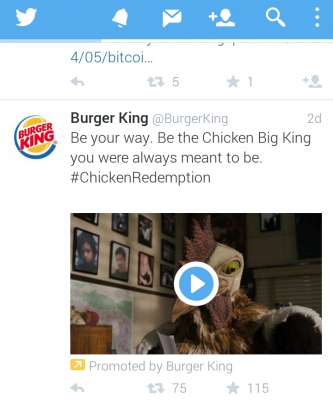As more and more consumers dived into social media as their main source of entertainment and media consumption, marketers dutifully followed. Nonetheless, as they explored how to effectively interact and communicate in the social media space, marketers realized that the traditional banners and pop up videos were no longer fit to do the task. As always, marketers need to step into the shoes of its consumers and understand what it is that they want to get out of it. There a need for an organic and natural element to the way the marketing message is delivered, which gave rise to Native Advertising.
According to Twitter,
“Native ads follow the
form of the user experience and function as natural content. In contrast to banner
and interstitial ad units, native ads are part of the overall app experience.”
 Twitter does a great work with incorporating native ads into its platform. With a simple “promoted” tag, the tweets, trending hashtags, and suggested channels are incorporated in the twitter feeds of its users. Moreover third party resources such as MoPub allow marketers to strategically coordinate the time and repetitive cycle of the promoted ads. This further functionalities help ensure that the user experience is not overcrowded with ads. Most importantly, it allows marketers to place content where users are actively playing attention to and providing content that is aimed to enhance the user experience versus diminish it.
Twitter does a great work with incorporating native ads into its platform. With a simple “promoted” tag, the tweets, trending hashtags, and suggested channels are incorporated in the twitter feeds of its users. Moreover third party resources such as MoPub allow marketers to strategically coordinate the time and repetitive cycle of the promoted ads. This further functionalities help ensure that the user experience is not overcrowded with ads. Most importantly, it allows marketers to place content where users are actively playing attention to and providing content that is aimed to enhance the user experience versus diminish it.

Further Readings:
– 12 Examples of Native Ads (And Why They Work)
– Download link of The Native Advertising Playbook